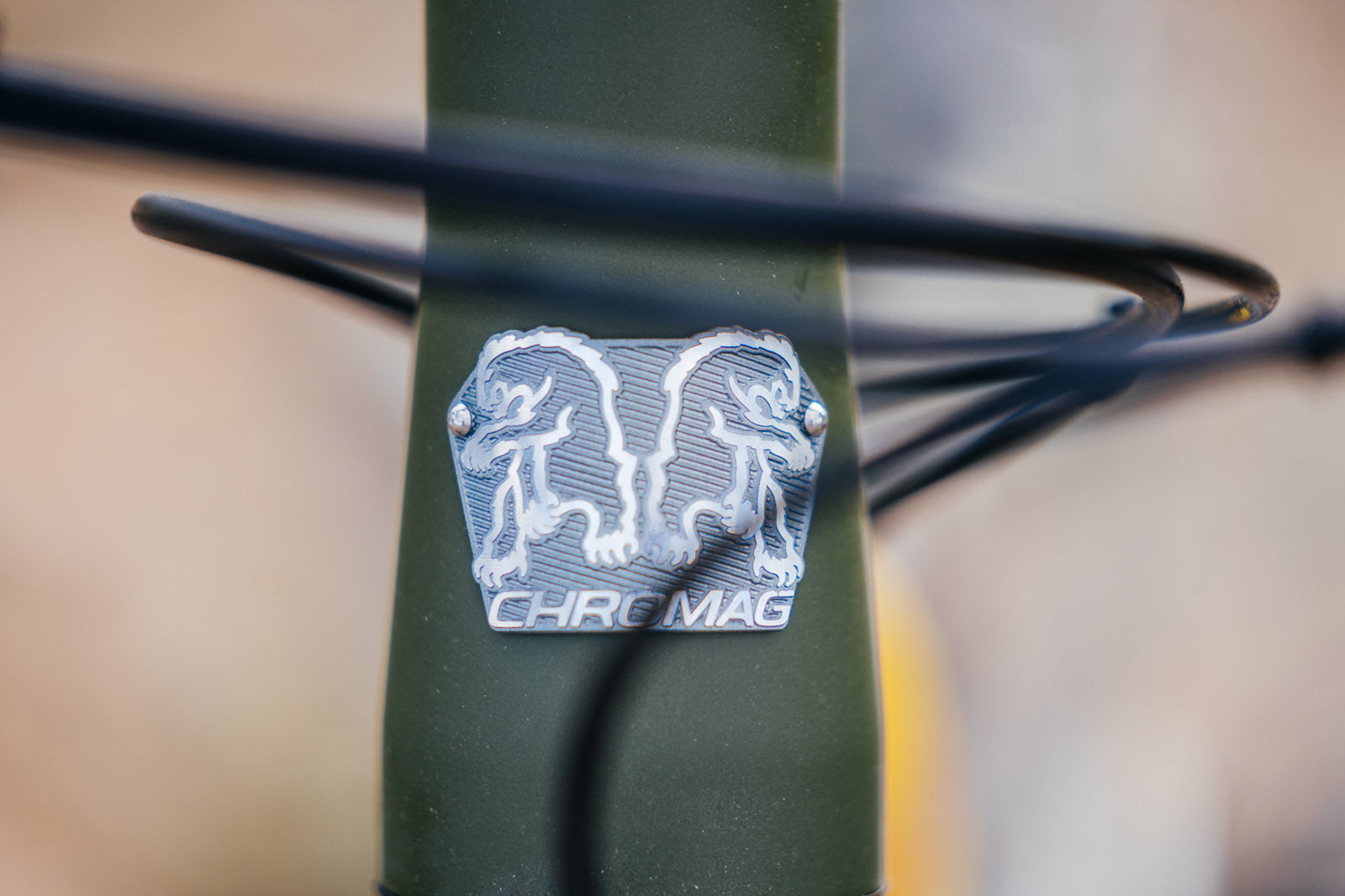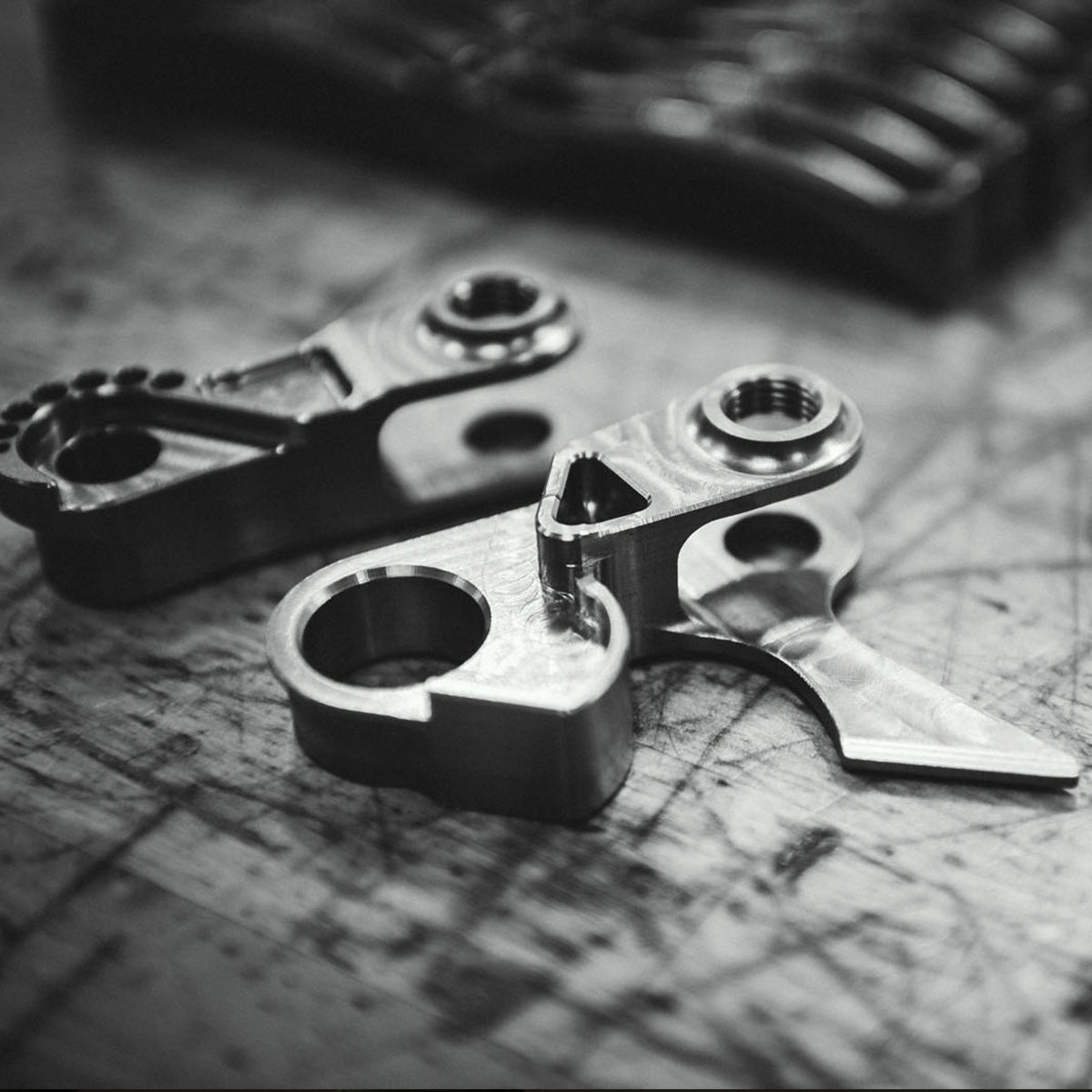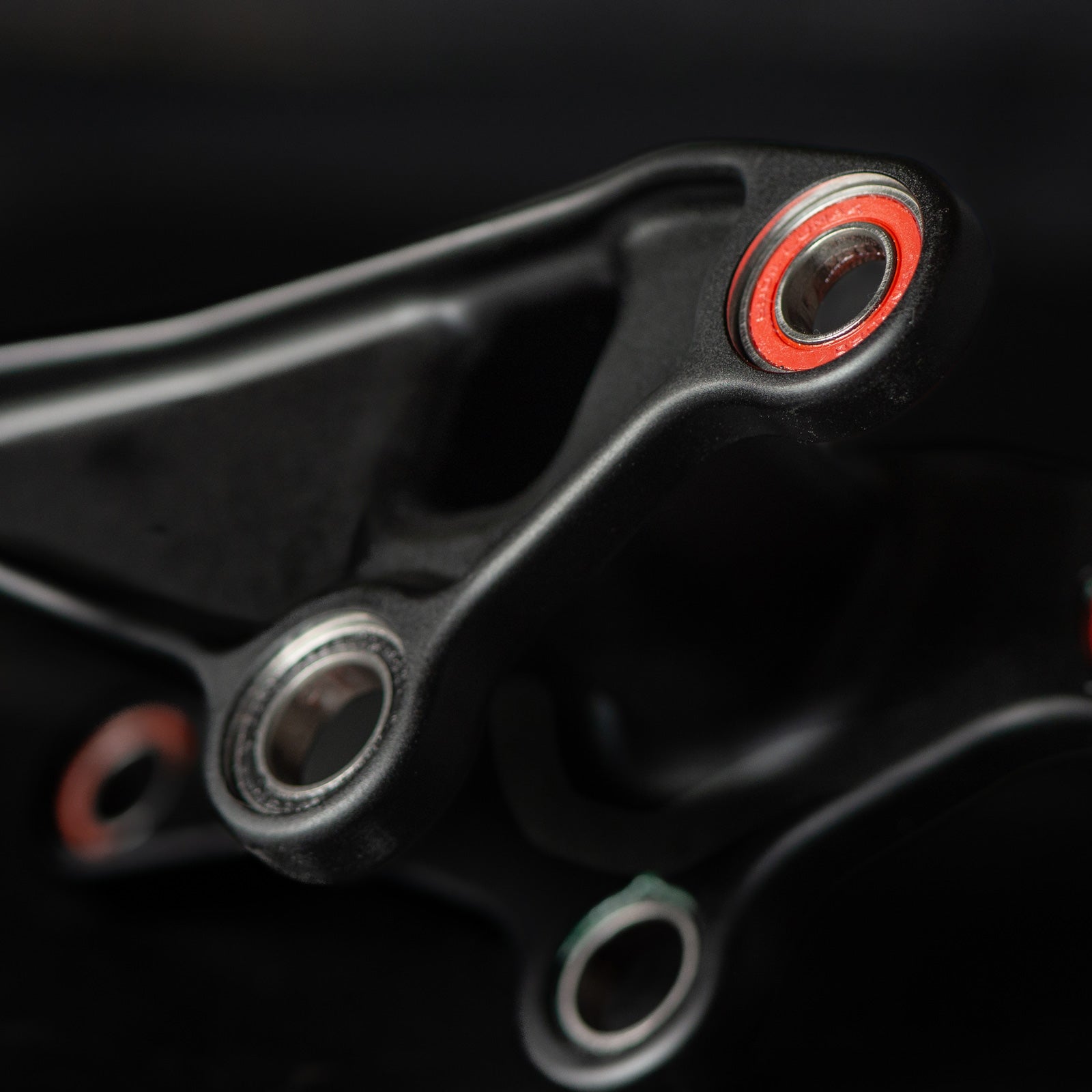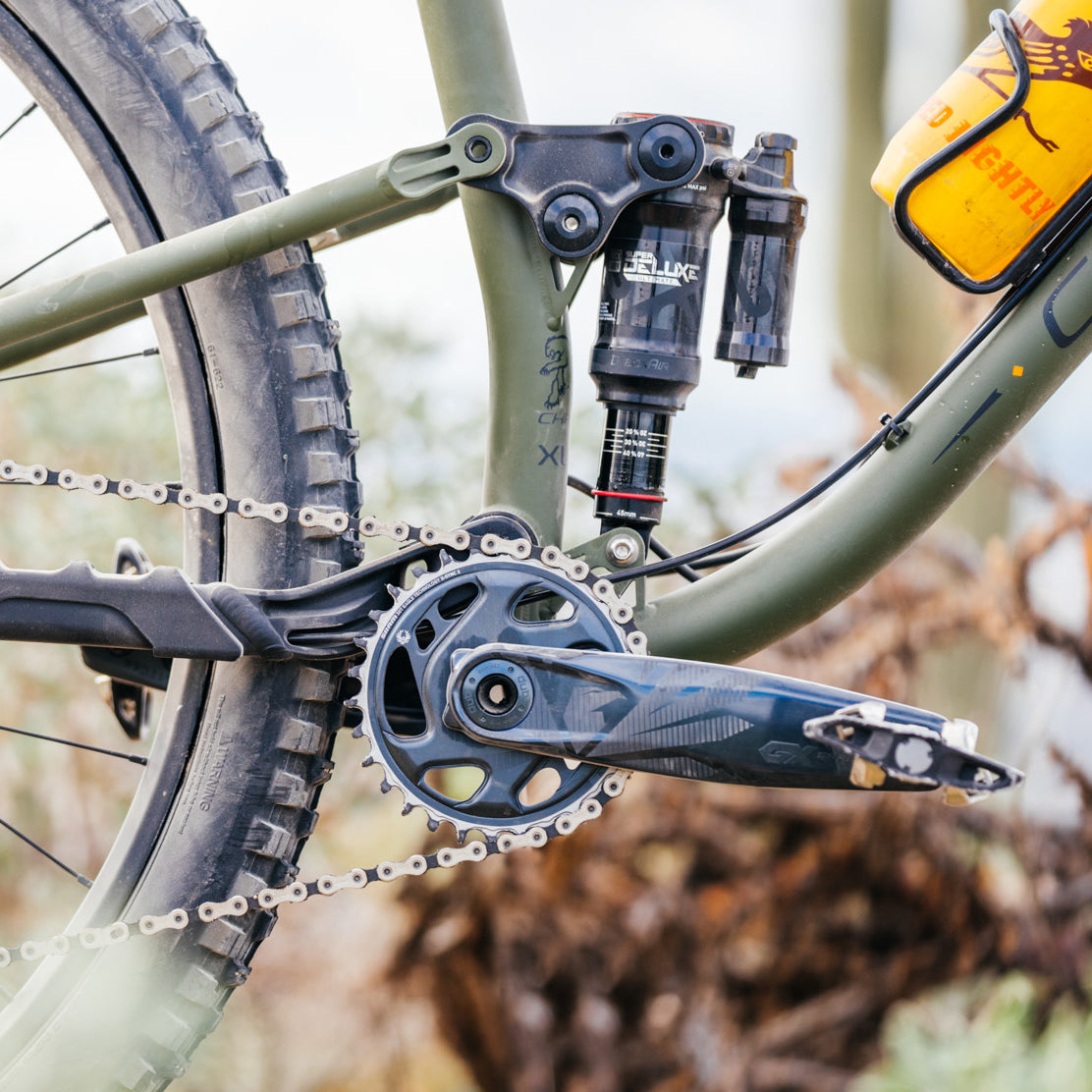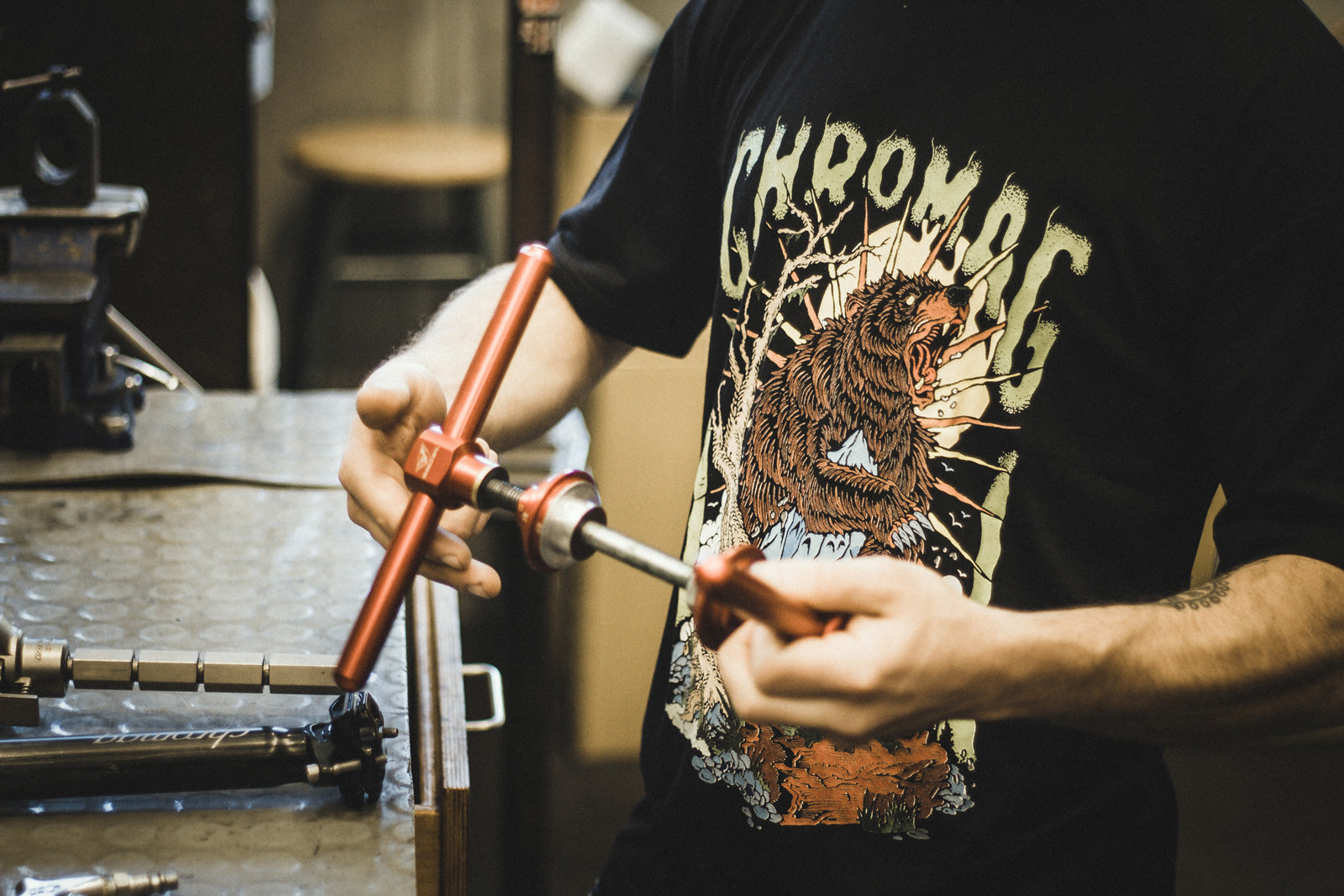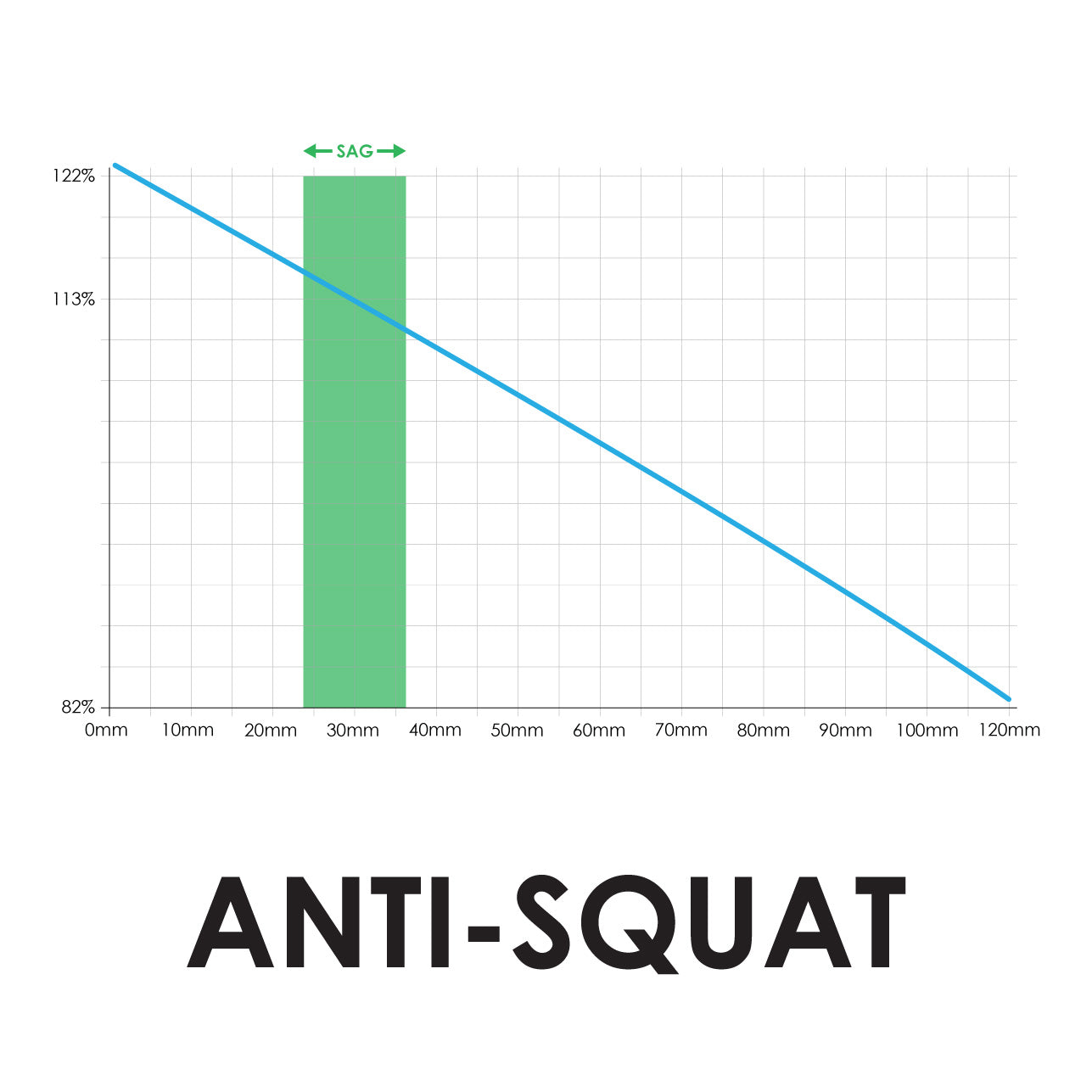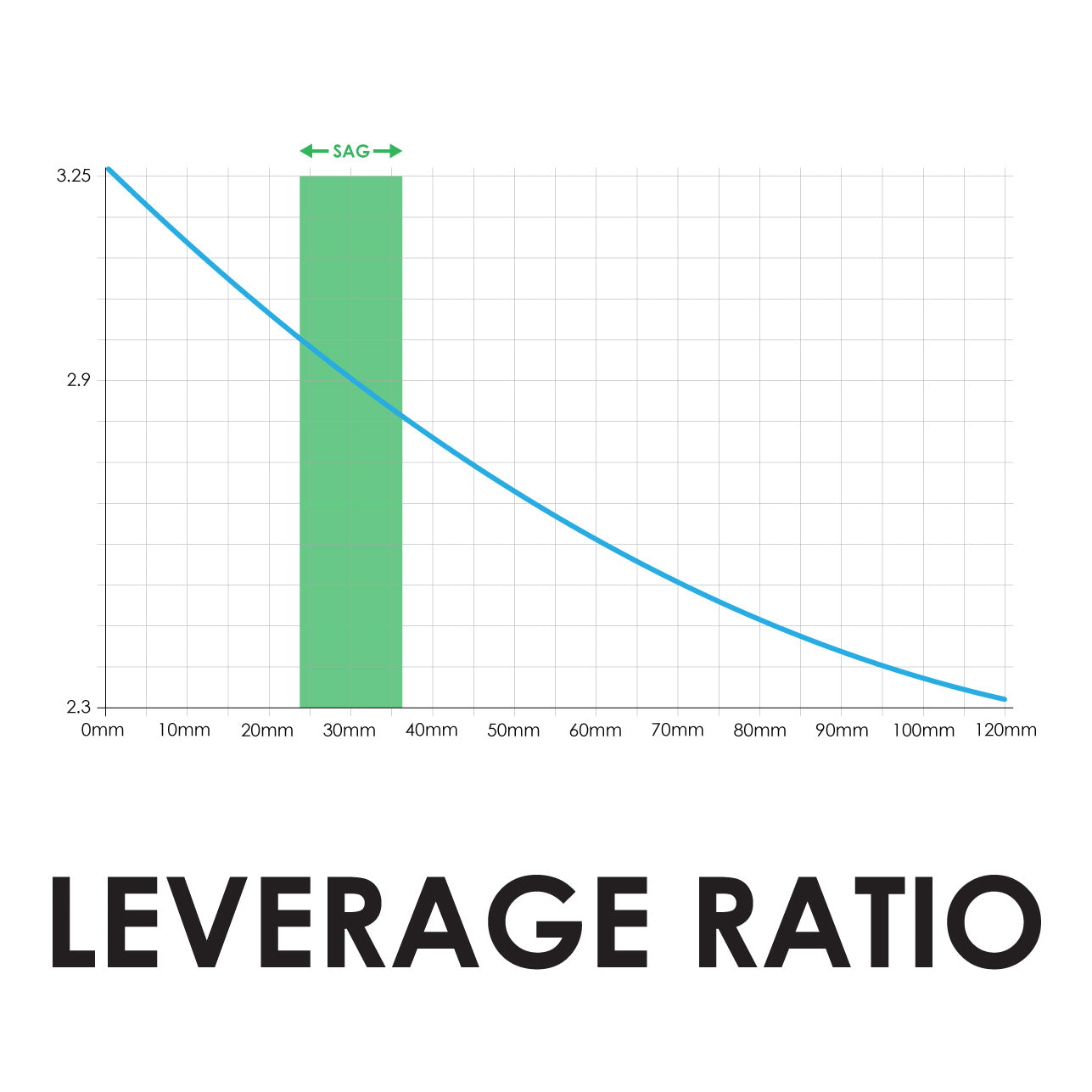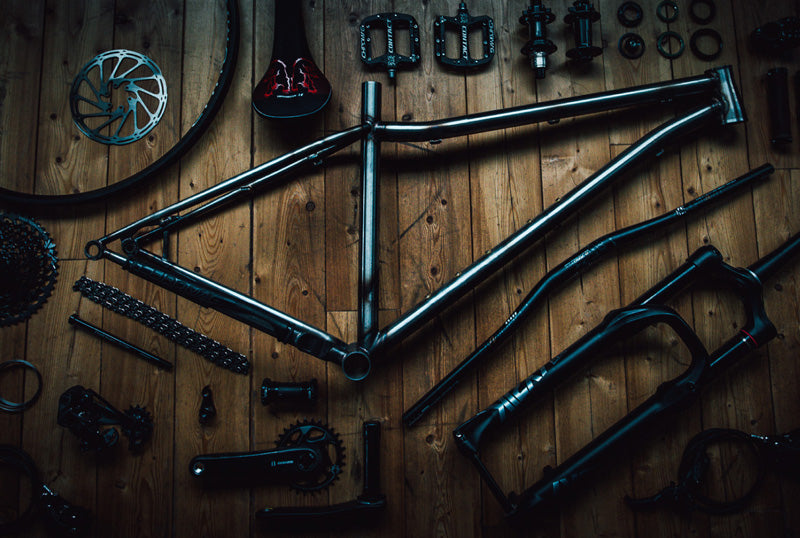"full of character and boldly unique in a world where lots of bikes are beginning to feel the same"
- PinkBike
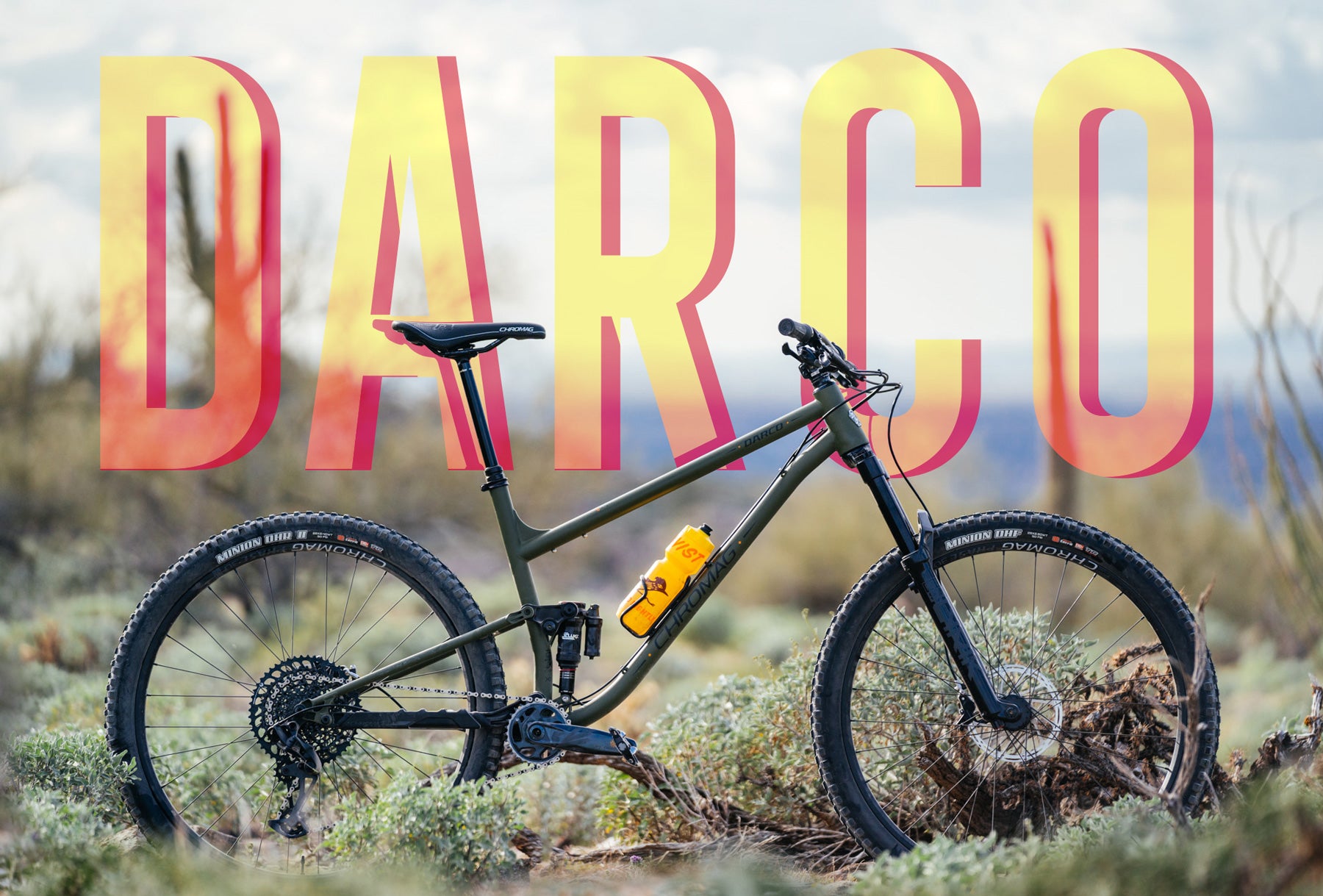
The Radavist's "MTB of the year".
Darco
160mm
120mm
29"
Steel & Aluminum
3 Year Warranty
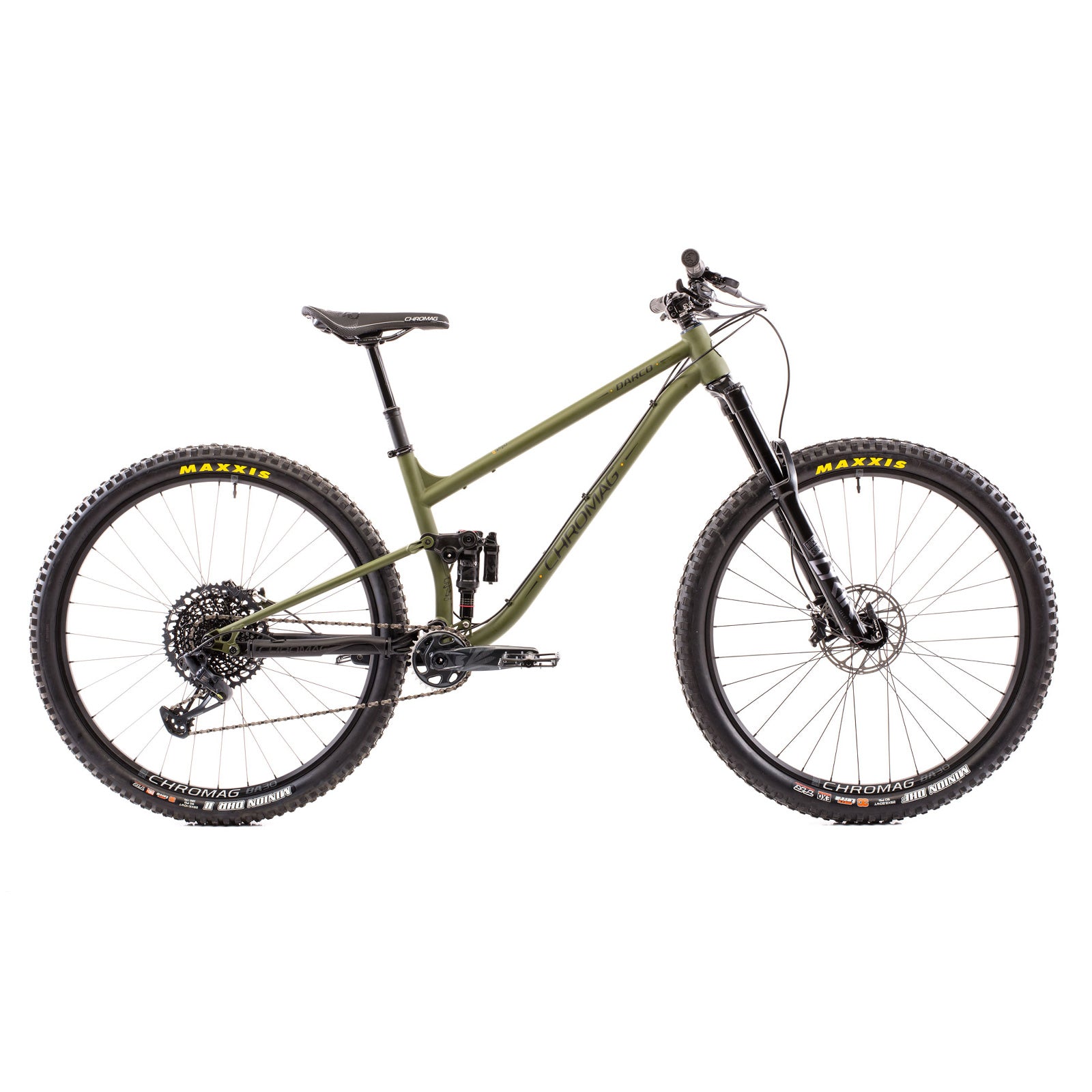
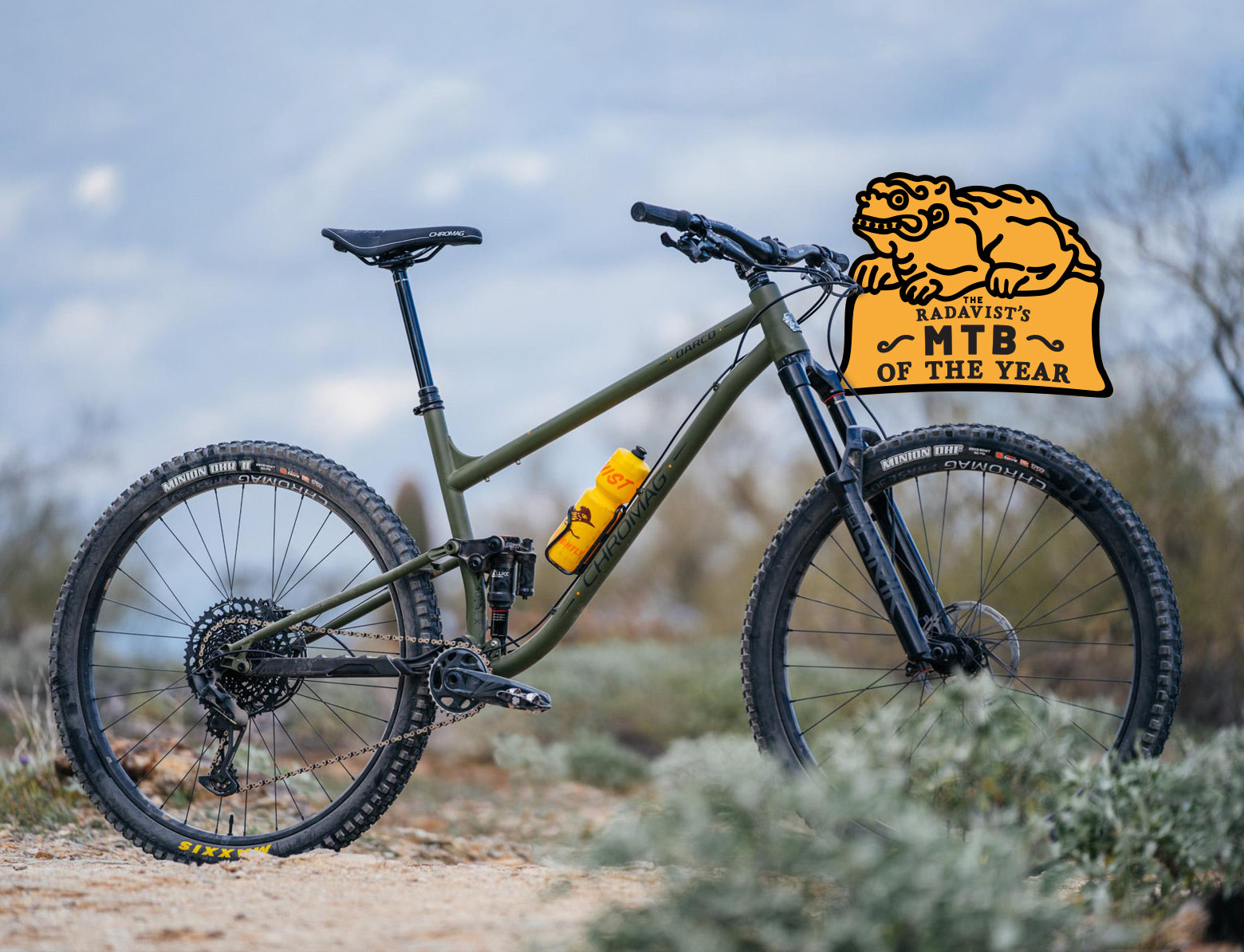
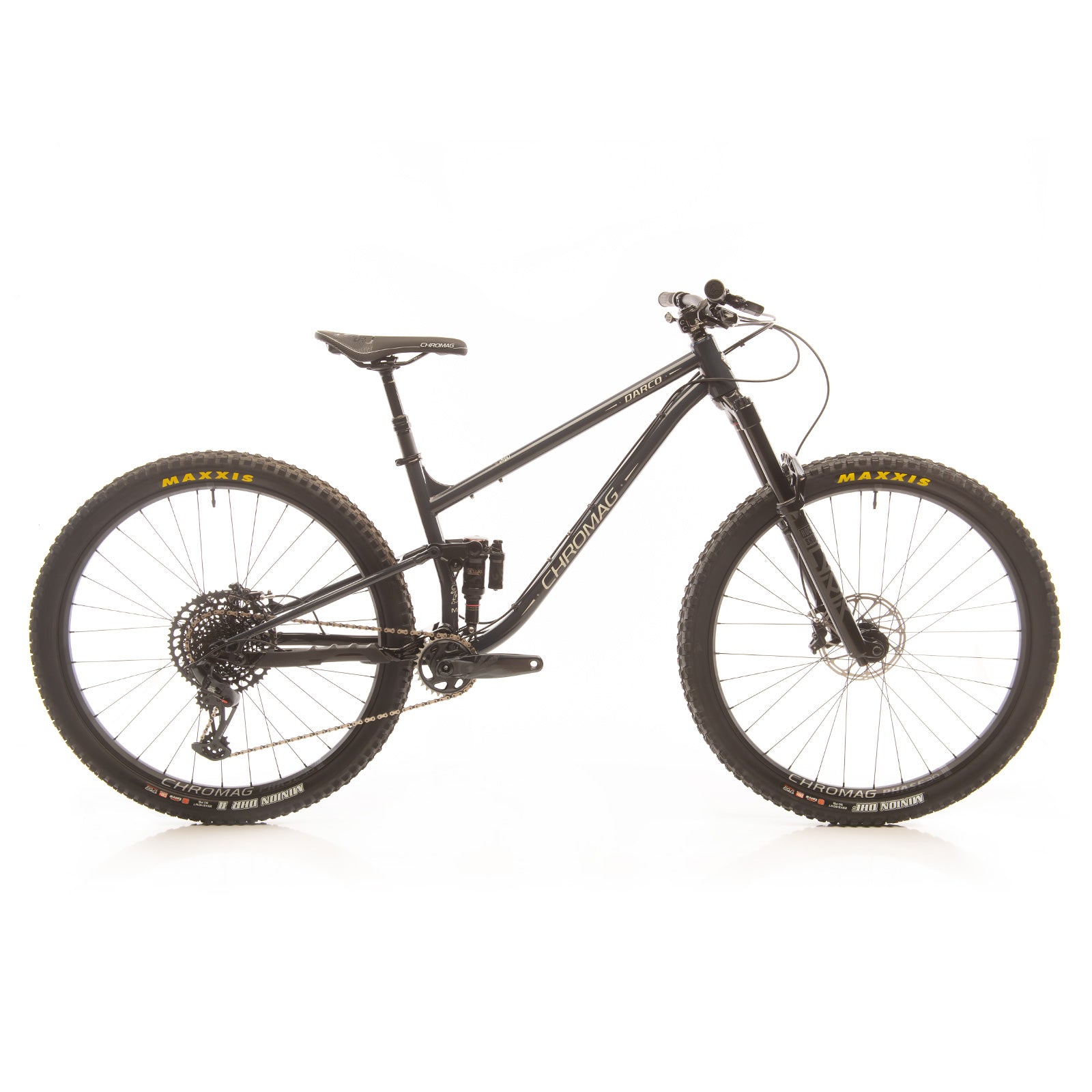
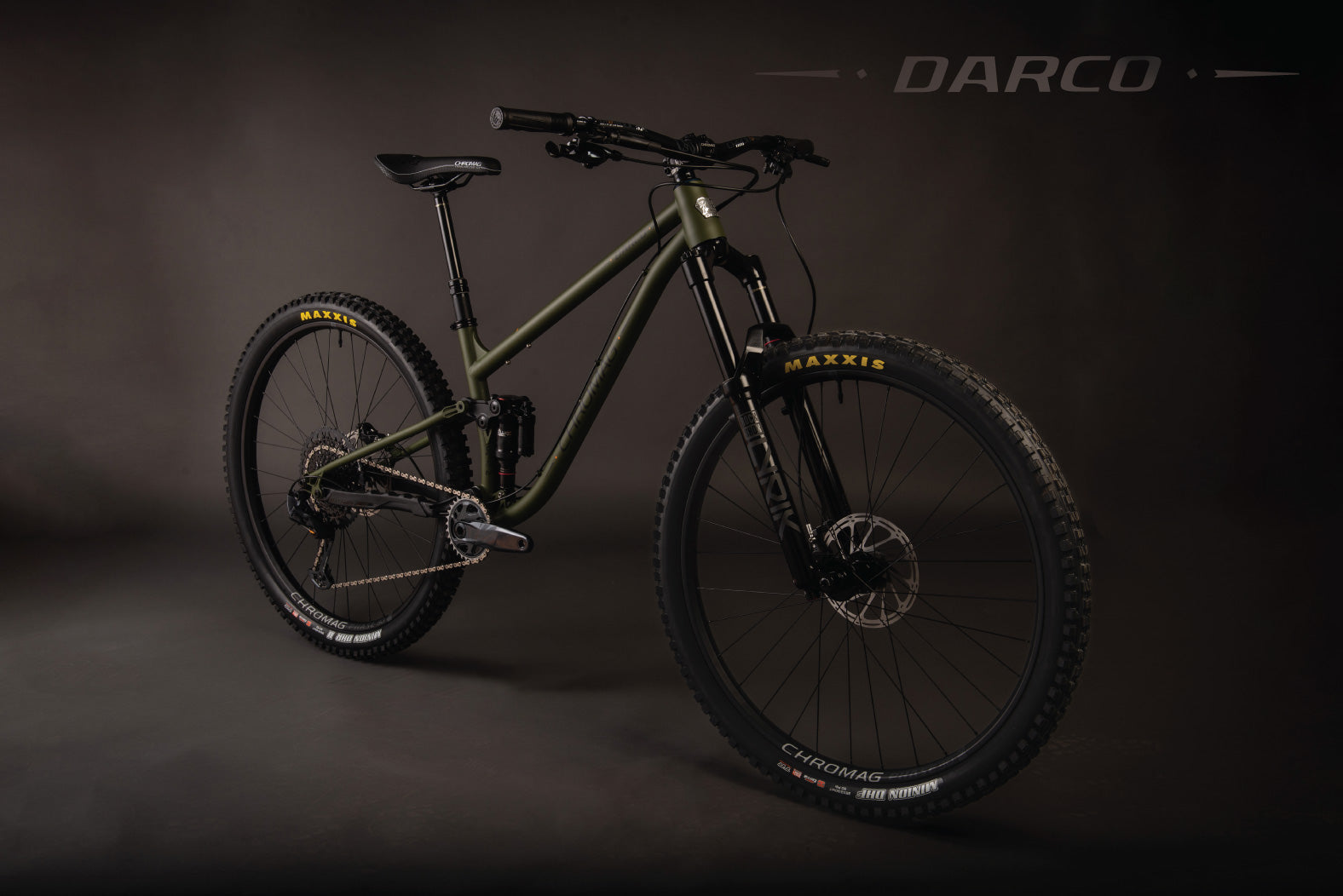
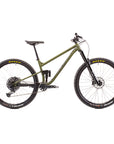
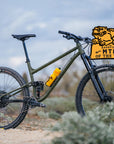
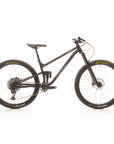
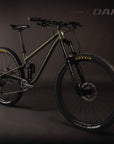
"It is by far the most advanced steel full suspension on the market"
- The Radavist
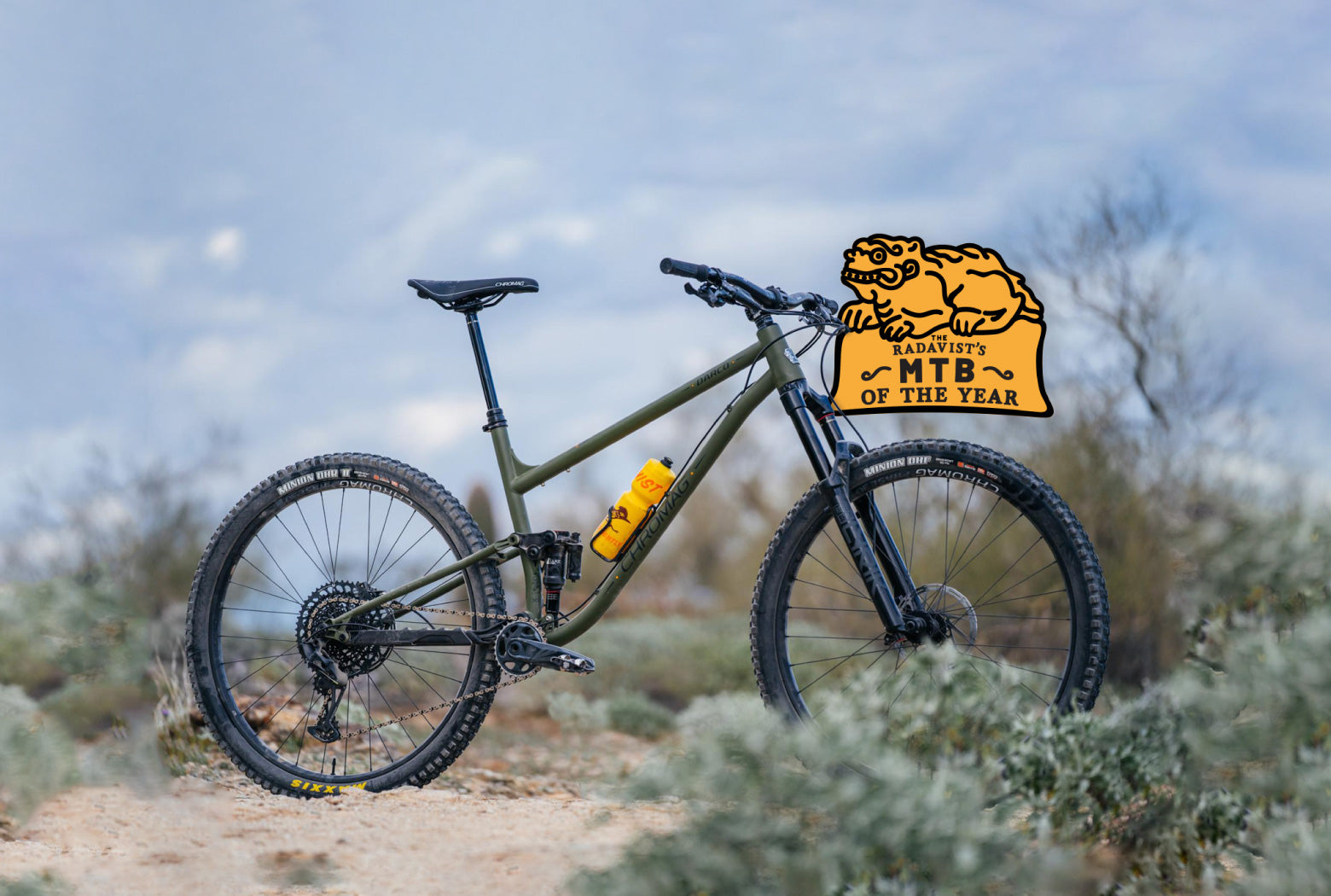
Builds & Specs
• Fork // Rockshox Lyrik Select + 160mm, 0 Tokens
• Shock // Rockshox Super Deluxe Air Ultimate, 2 Tokens
• Stem // Chromag HiFi BSX 40mm
• Bar// Chromag OSX 25mm Rise, 800mm
• Headset // Cane Creek Forty ZS
• Crank // SRAM GX 170mm
• Brakes // SRAM Code RSC
• Rotors // SRAM 200mm
• Shifter // SRAM GX Eagle
• Cassette // SRAM GX Eagle 10-52t
• Derailleur // SRAM GX Eagle
• Rims // Chromag 29" Phase30
• Hubs // Chromag R4
• Tires // Maxxis Minion DHF/DHR
• Seatpost // RockShox Reverb / OneUp
(150mm - S, M) (175mm - M/L) (200mm - L, XL)
• Saddle // Chromag Trailmaster DT
• Grips // Chromag Format
• Chain // SRAM GX Eagle
Build options are subject to availability and liable to change without notice.
• Frame Construction // 4130 Cr-Mo Steel / 6066 Aluminum
• Rear Travel // 120mm
• Wheel Size // 29”
• Rear Axle // 180mm, M12 X 1.00mm - Boost 148 UDH™ (Included)
• BB Type // BSA 73mm Threaded
• Headset // 44-56mm
• Linkage // Rocker Driven Horst Linkage
• Shock Size // 165 X 45mm Trunnion
• Lower Shock Hardware // 20 x 8mm
• Hanger // SRAM™ UDH™
• Recommended Fork Offset // 44mm
• Recommended Fork Travel // 150mm
• Seatpost Size // 31.6mm
• Seatclamp Size // 35mm
• Bottle Cage Mount // Yup!
• Gear Mount // Yup!
• Brake Mount // 180mm Post
• Frame Weight // Frame: 10.53bs // Complete: 34.75lbs
• Origin // Taiwan
The Darco
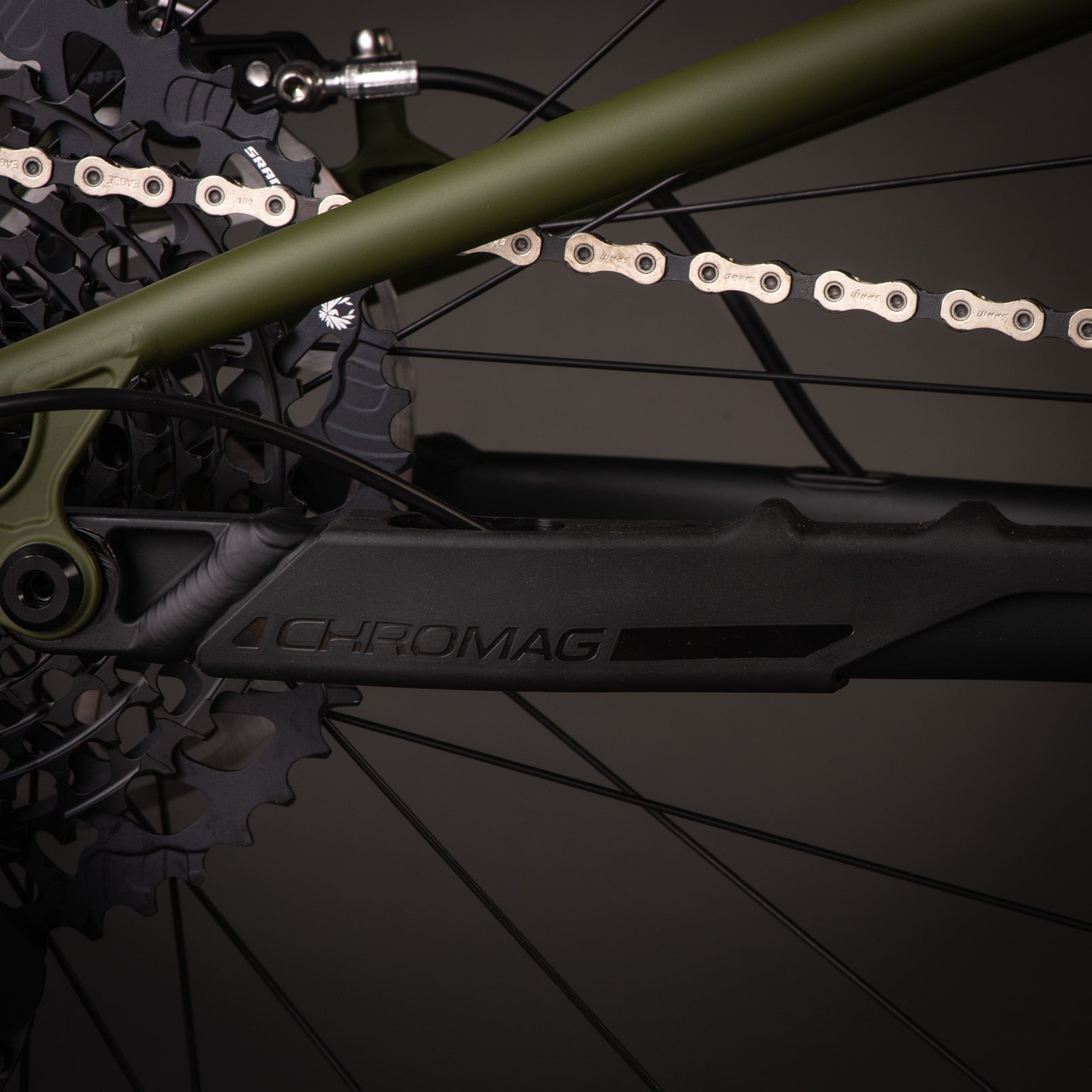
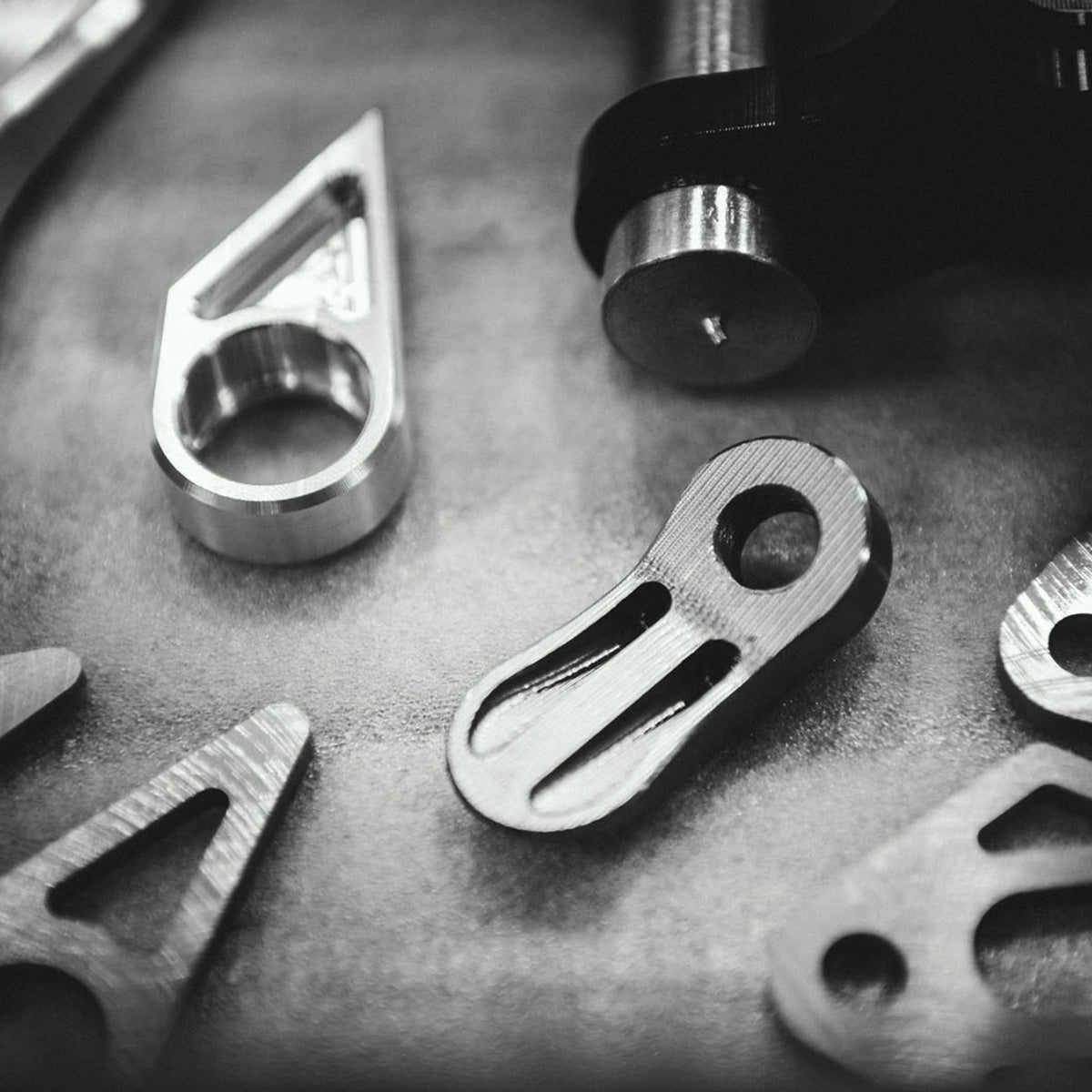
MATERIAL SELECTION
As you might expect from any Chromag, The Darco relies firmly on a 4130 chromoly steel foundation. We believe that the ride characteristics and aesthetics for which our hardtails are known, absolutely translates to a full suspension platform.
However, a dual suspension rig provides different challenges, which is why we opted for 6066 aluminum chainstays. Primarily for weight saving and stiffness, but the chainstay also houses bearings which is more difficult to do in steel. Building the chainstay out of aluminum helps strike the right balance of compliance and rigidity.
The rocker is made from forged aluminum due to its strength/weight ratio and ability to be machined.
We’ve pored over the design of this bike.
key features
Suspension designed, tuned and honed in the Sea to Sky.
suspension kinematics
We chose to use a 4-bar suspension layout for the Darco, with a main pivot located just above the bottom bracket, a seattube-mounted rocker link, and a vertically oriented, trunnion-mounted shock. We found this layout to strike a good balance of tuneability, ride quality, and elegant simplicity. A 4-bar layout offered enough tuning parameters for us to design the suspension characteristics the way we wanted them, simultaneously achieving our targets for leverage ratio, progression, anti-squat, and anti-rise.
At the same time, it keeps things simple and intuitive. With no hidden hardware, sliders, or concentric multi-link pivots, every pivot can be accessed, bolt-checked, and worked on without taking the whole bike apart.
Aggressive and rewarding.
geometry
Our geometry philosophy has carried right over onto this bike, pairing slack head tube angles (64°) and steep seat tube angles (78°), with ample room up front (490mm reach on M/L). Perfect for the type of terrain we have in the Sea to Sky, steep climbs and steeper descents.
The Darco rewards accuracy and precision, yet delivers much more punch than the 120mm rear end would suggest.
| Frame Size | STypical Rider Height: 155cm - 165cm | MTypical Rider Height: 163cm - 174cm | M/LTypical Rider Height: 172cm - 183cm | LTypical Rider Height: 181cm - 192cm | XLTypical Rider Height: 190cm - 200cm |
|---|---|---|---|---|---|
| 617 | 617 | 622 | 631 | 640 | |
| 450 | 472 | 490 | 514 | 530 | |
| 581 | 603 | 622 | 648 | 666 | |
| 100 | 100 | 105 | 115 | 125 | |
| 1214 | 1236 | 1256 | 1284 | 1305 | |
| 39 | 39 | 39 | 39 | 39 | |
| 335 | 335 | 335 | 335 | 335 | |
| 677 | 707 | 736 | 765 | 795 | |
| 435 | 435 | 435 | 435 | 435 | |
| 350 | 380 | 410 | 440 | 470 | |
| 193 | 224 | 254 | 284 | 315 | |
| 64° | |||||
| 78° | |||||
| 29.0'' | |||||
* Max. post insertion based on Rockshox Reverb
















THIS IS AN APPROXIMATE GUIDE, SOME PEOPLE HAVE LONGER LEGS THAN OTHERS!
Sizing
If you're between sizes, it's a good idea to try to ride them both, either by hopping on a demo or stealing from a close friend. If that isn't an option, examine reach, stack and ETT numbers on your current bike and compare. If in any doubt, please get in touch and we'd be happy to chat about it with you.
You could also check out the review section, to see how this bike fits other people.
Feast your eyes.
gallery
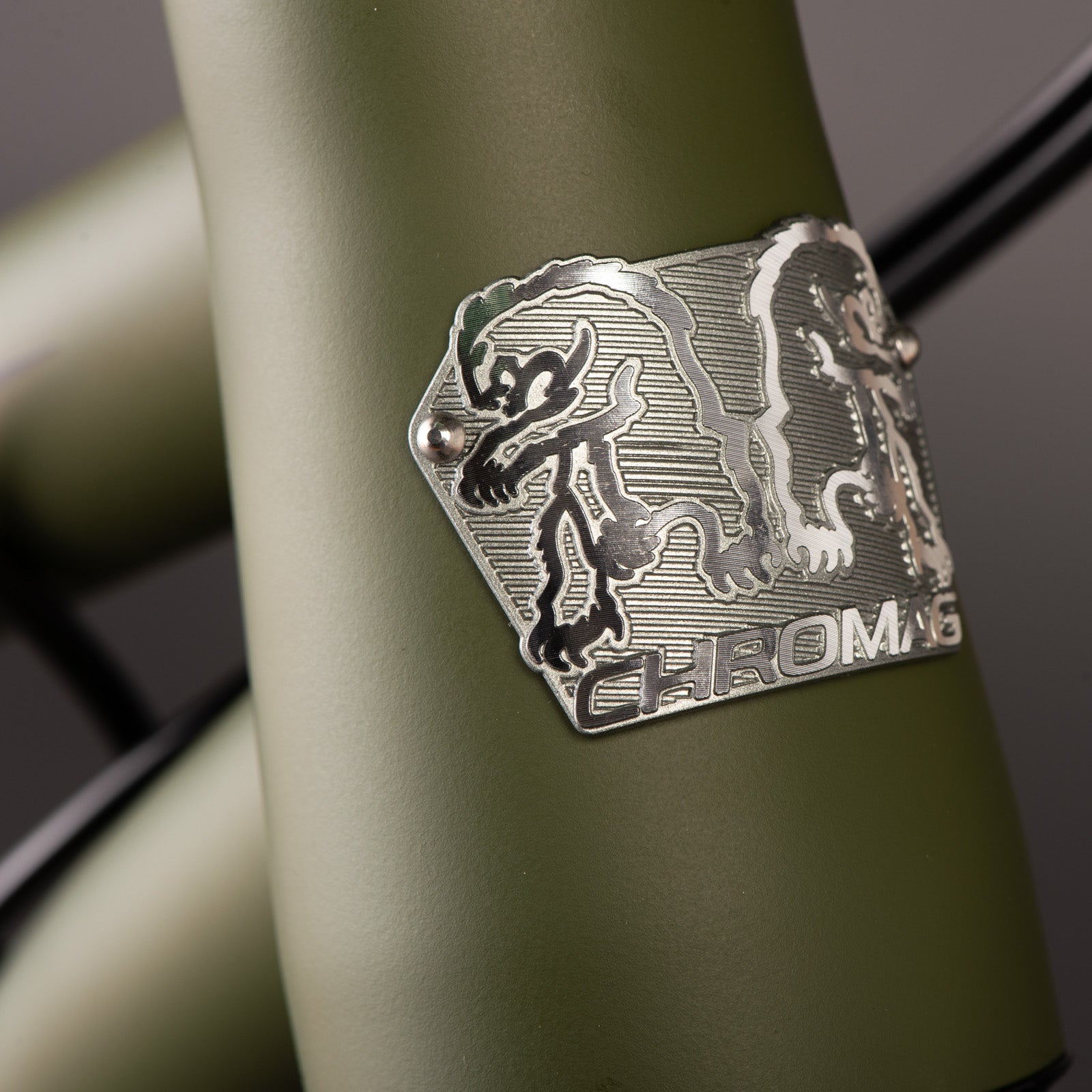
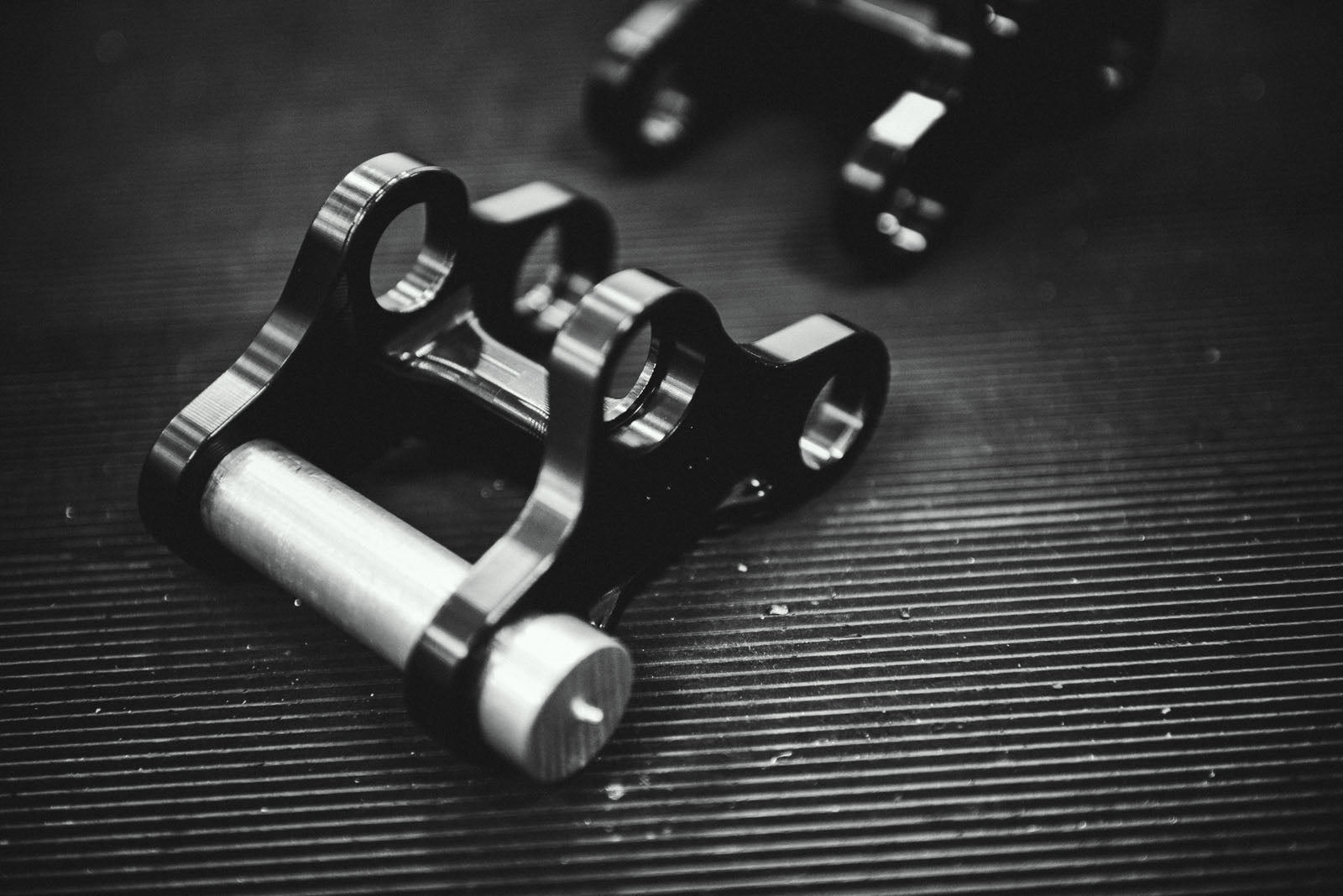
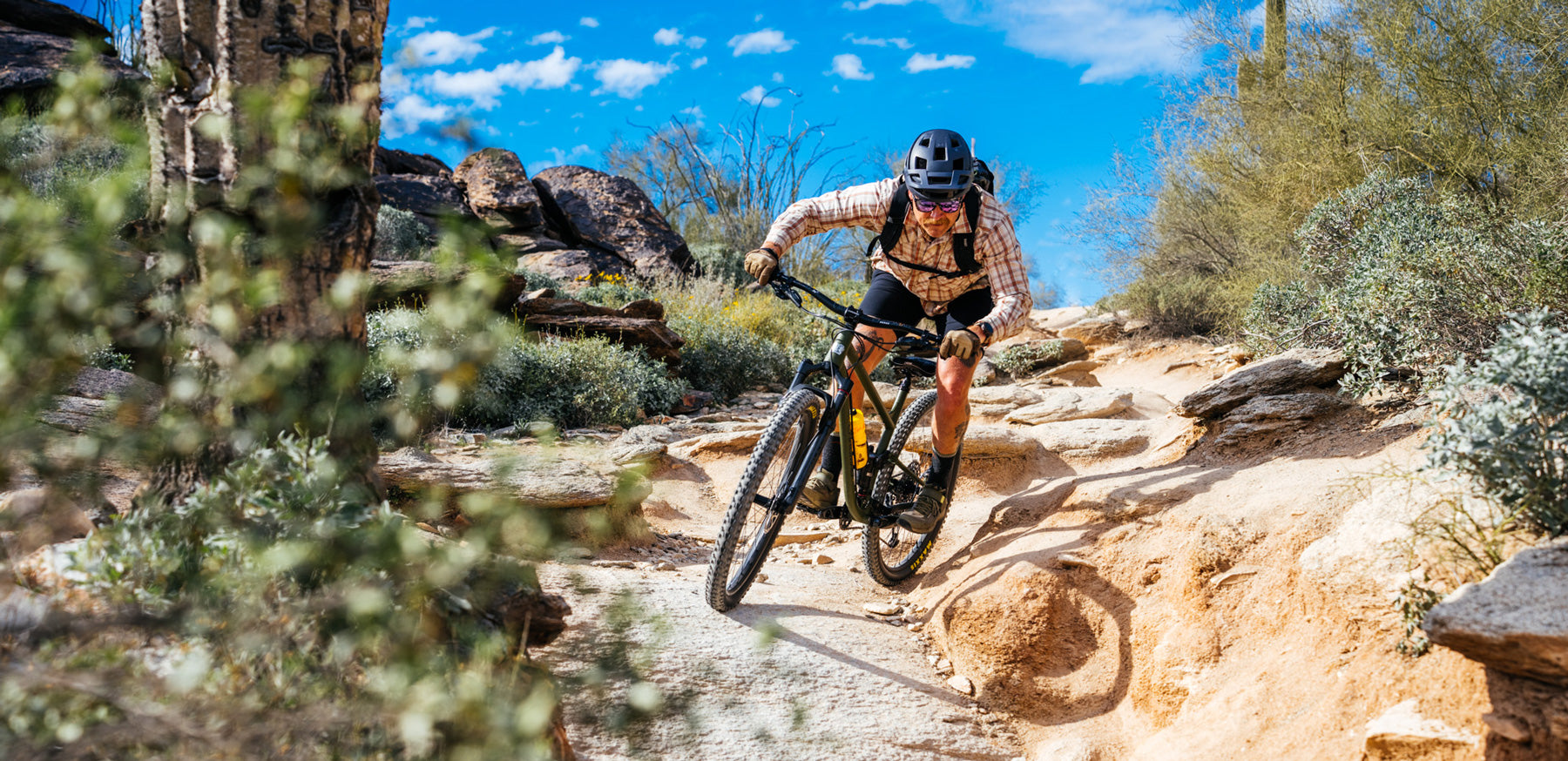
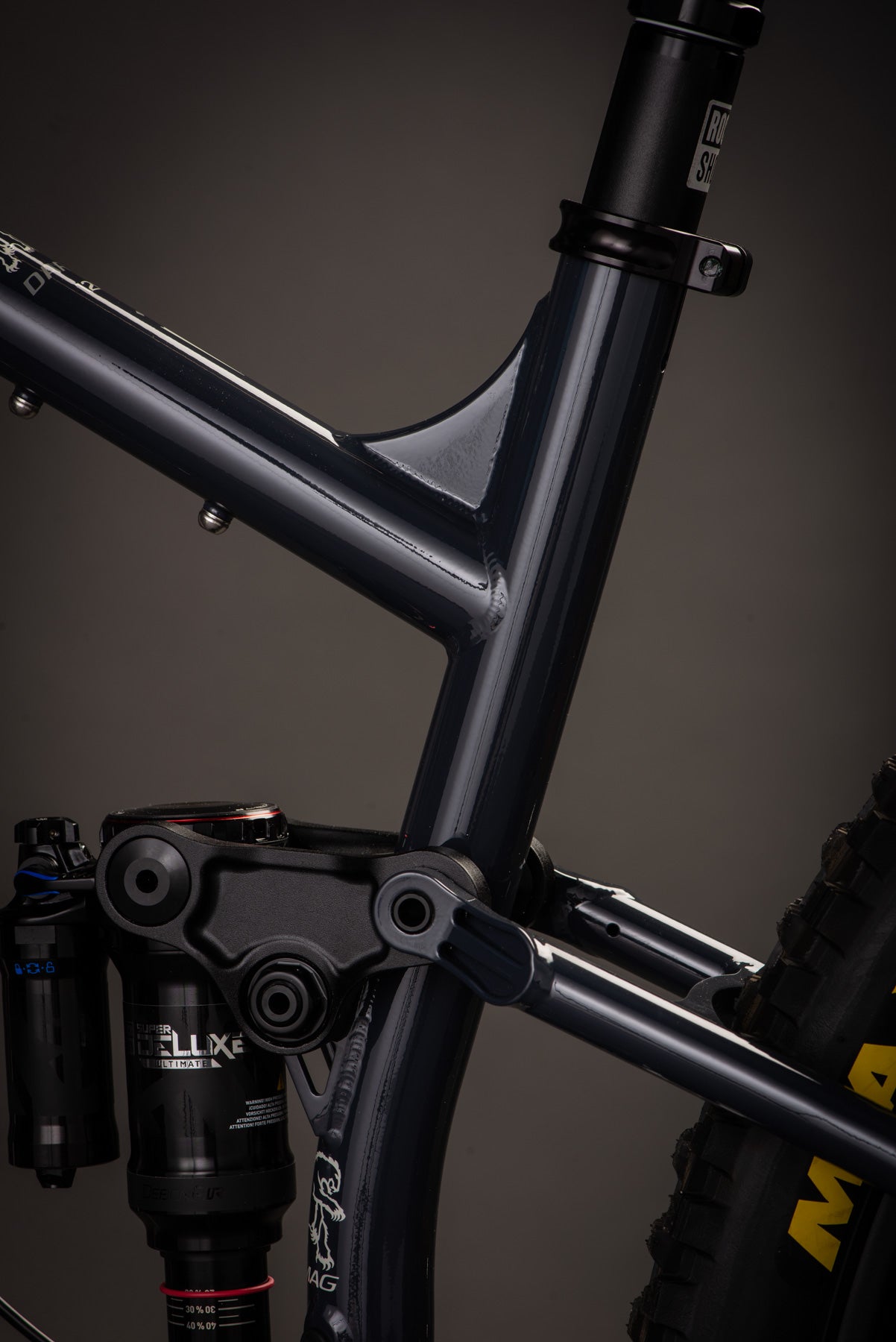
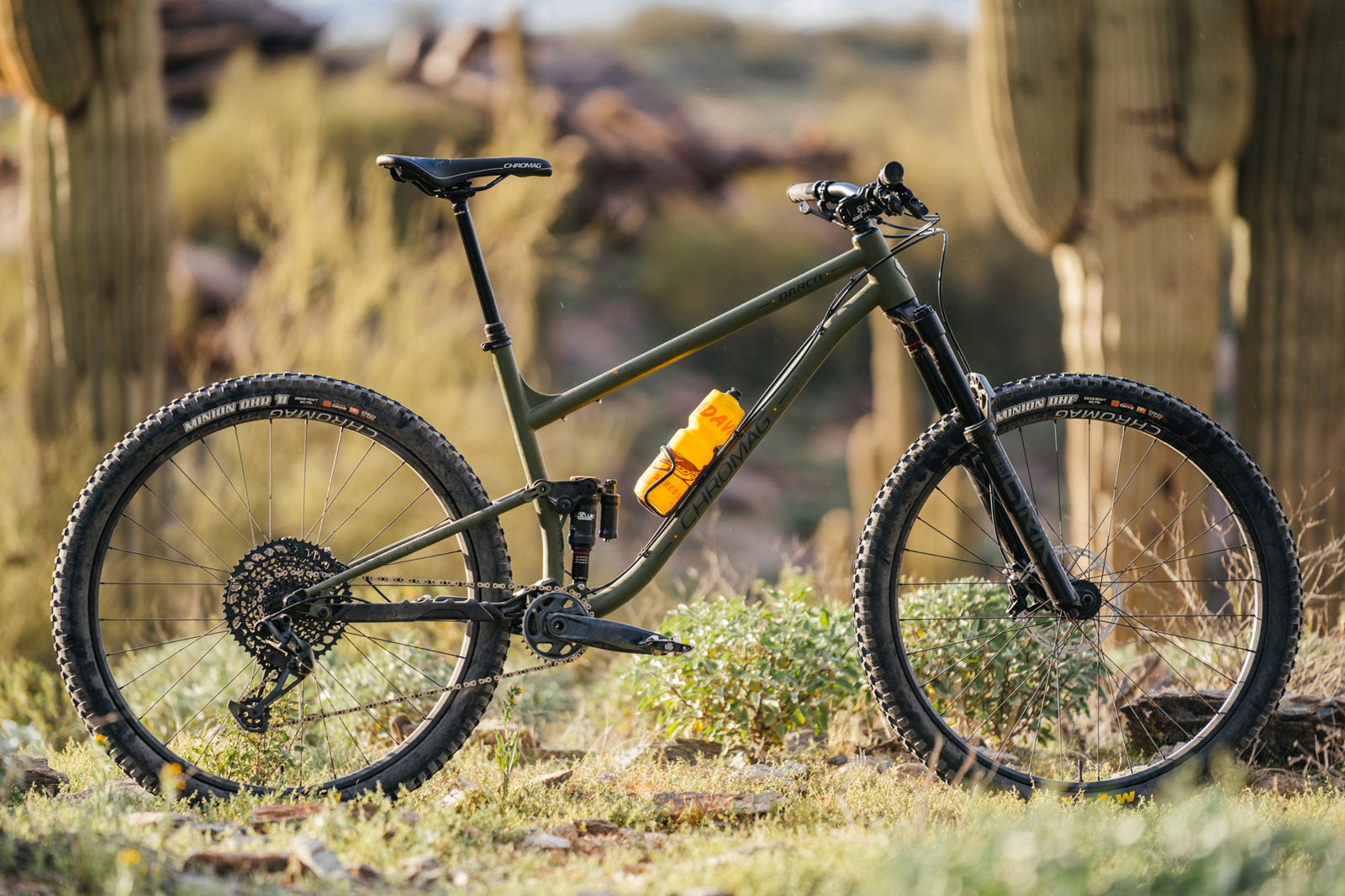
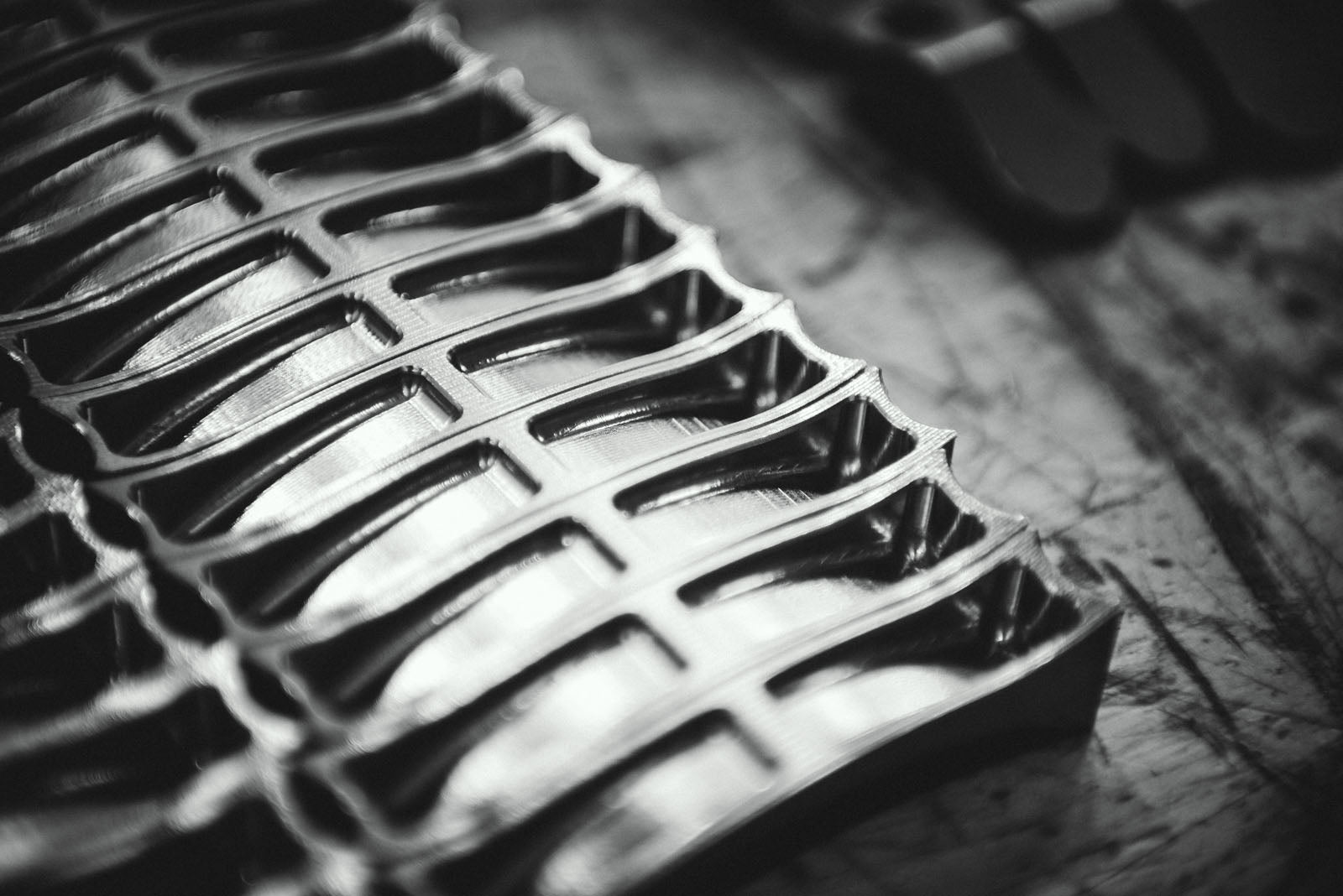
FAQ's
It would be possible (as it technically is with all 29” bikes) however it would drastically change the geometry and behaviour of the bike. The bottom
bracket would be low enough to be annoying for pedal strikes, and the head angle and seat tube angle would be slacker. This would make the
bike less nimble and more of a plow, which is quite far removed from how we designed it.
In general, expect that most coil shocks will not fit the Darco. The kinematic was designed around an air shock, and a coil shock does not suit this
bike’s attitude very well given the small amount of rear travel.
This means fitting a shock that has a longer eye to eye or stroke to get more travel out of a frame. This is not possible on the Darco – there would be
clearance issues in several areas at bottom-out. It would also adversely affect the kinematics and geo.
The Darco will fit most tires up to 2.5” wide. Note that most tires do not measure exactly as stated by the manufacturer, and tires from one
manufacturer vary greatly to the next.
There are no ISCG mounts on the Darco. The bike was designed without a chain guide option, to leave more room for the main pivot and thus more
bearing stability.
A collet axle means there is no pull up to remove any free space in the main pivot bolted joint. This eliminates binding as it goes through its travel, improving suspension performance.
All bearings are surrounded, where possible, by large flat surfaces making removal and refitting far easier. There is access to the outer race of all bearings so if a bearing inner race comes out leaving the outer behind it is still possible to remove the outer with simple tools. See exploded diagrams in the tech pack for more info.
If you’re not comfortable removing/installing your own bearings, we strongly recommend bringing your bike to a local bike shop. It’s possible to damage your bike beyond repair if you improperly remove/install your bearings. Such damage would not be covered under our warranty policy.
The Darco can accommodate a change in fork travel of up to +/- 10mm. Using a 160mm fork will slacken the headtube and seattube angles by
about 0.5° and raise the BB. A 140mm fork will do the opposite. Keeping it simple, a longer fork will make the bike more stable at speed, and a
shorter one will make it more responsive. That being said, we designed the bike around a 150mm fork as we think it is well-suited to the character of
the bike, striking a good balance of agility and stability.
The Darco uses a boost rear end (148mm). As such, the chain line should reflect this, typically 51-54mm or a 3mm offset on the chain ring if running
SRAM.
With a 52mm chainline (SRAM boost standard), the Darco can fit up to a 34-tooth chainring.
For context, most of us here are running a 30t, with a 10/52 cassette.
Download the tech pack here for all the juicy details.
Check out this guide.
Not much! You can read in depth about it here, but in short:
• Inflate tires to desired pressure. (Sealant is already installed)
• Install brake rotors, tightening bolts to 6.2Nm.
• Attach derailleur to frame, tightening to 9Nm making sure that the B-tension tab rests properly against the derailleur hanger stop.
• Grease headset bearings, install fork and handlebar, positioning the headset spacers above or below the stem according to rider fit.
• Align handlebar stem, preload headset and tighten stem pinch bolts to 8Nm.
• Install wheels, tighten axles.
• Install chain with quick link.
• Grease pedal threads and install pedals using pedal washers supplied.
• Adjust brakes, shifters, saddle position and height for personal preference.
• Set up suspension.
• Bed-in brakes. (Roll down a gentle gradient dragging one brake at a time. Avoid locking them up.)
• Go ride!
Note: If you had to Google "Nm", or you don't know which way to install your rotors, you should probably get a qualified mechanic to build your bike!
• Chain length adjusted.
• Gears adjusted.
• Brakes set up and bled.
• Handlebar tightened to 6Nm.
• Grips tight on handlebar.
• Crankset tight, bottom bracket tight/adjusted.
• Saddle and seatpost tight.
• Seatpost greased *make sure to re-grease every 6 months!
• Tire sealant installed.
• Cassette tight.
It’s a good question because this simply isn’t a common offering in the bike market. Most bikes in the 120mm travel class are aimed at light duty XC riding and assumes the rider wants a bike that resembles an XC race machine for buffed singletrack and skinny tires.
At Chromag, we’ve spent a lot of time discovering how to design hardtails to handle rough, steep terrain, and when we designed the Darco, it needed to be just as capable. But why not more travel? The answer follows the philosophy of our love for hardtails.
Feeling the trail is rewarding, and when a bike has pop, accelerates quickly, and comes off the ground quickly, there are moments of ninja magic to be had.
The Darco isn’t built for light duty use. We wanted reliability and longevity out of this bike. It’s built to last, be easily maintainable, while delivering clean quiet performance.
We used Chromoly tubing because we know it so well. We’ve spent years fine tuning our own custom chromoly tubes to withstand the rigors a trail bike sees, and we know what to use for the application. Aluminum is a great material, but so is Steel!
Trunion shocks could be susceptible to situations where frame alignment isn’t good, or there is undue lateral flex between the points where the shock is connected to the frame.
These situations don’t exist in our frames. We manufacture our frames to a high tolerance and ensure that alignment and precision exists at all assembly points including shock mounting.
